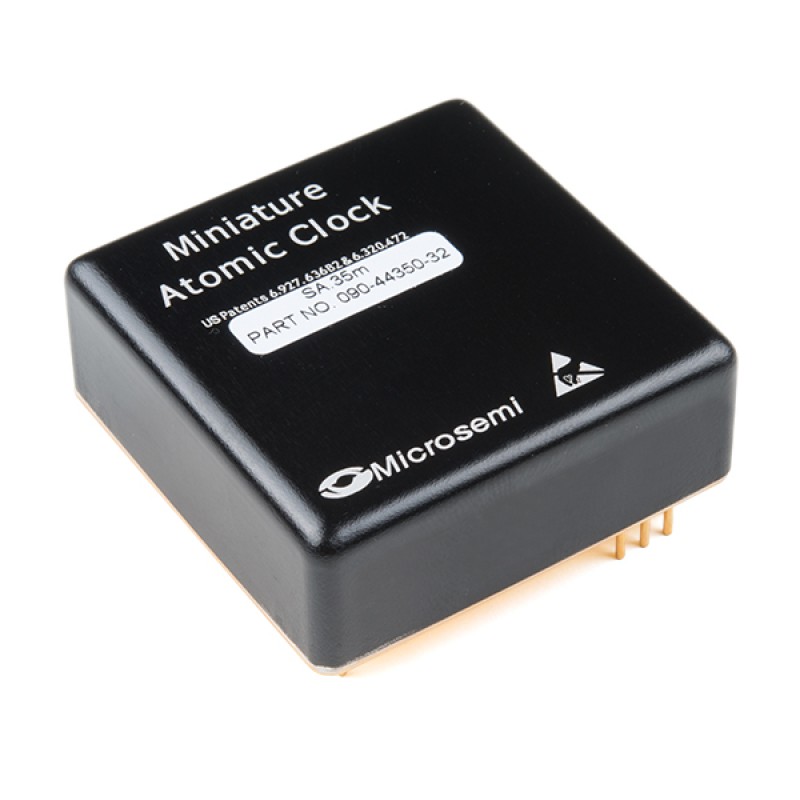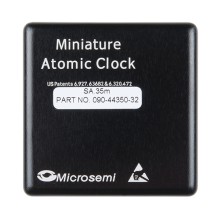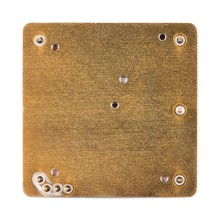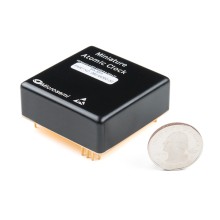The Miniature Atomic Clock (MAC) from Microsemi uses a rubidium laser to output an extremely accurate clock. We're speaking at the edge of our knowledge so please bear with us but the short-term stability (Allan Deviation) is ≤8*10-12. From Wikipedia on Atomic Clocks:
For context, a femtosecond (1×10−15 s) is to a second what a second is to about 31.71 million (31.71×106) years and an attosecond (1×10−18 s) is to a second what a second is to about 31.71 billion (31.71×109) years.
That puts the SA.35m Miniature Atomic Clock in the picosecond category of eight seconds per 31,689 years. Said differently, the MAC loses a second every 4,000 years or so.
How does it work? From Microsemi:
The MAC is a passive atomic clock, incorporating the interrogation technique of Coherent Population Trapping (CPT) and operating upon the D1 optical resonance of atomic Rubidium Isotope 87.
A rubidium clock is basically a crystal oscillator locked to an atomic reference. The rubidium physics package serves as a passive discriminator, producing an error signal that varies in magnitude and sense as a function of the difference in frequency between the applied RF excitation and the atomic resonance. Rubidium is a small, low weight and low cost atomic standard that is quickly activated. It delivers good phase noise performance, exhibits low G force sensitivity, and operates in a wide temperature range. These advantages make it an ideal alternative to quartz technology. Rubidium clocks provide rapid operational stability after turn on, exhibit better long term aging characteristics, and are less susceptible to physical effects.
A low-cost GPS receiver can get you accurate timing at ±10,000ps. The Miniature Atomic Clock SA.35m is four orders of magnitude more accurate at ±8ps. And considering atomic clocks used to be the size of a small car, the MAC is incredibly small at 51x51mm (2" square).
Applications:
- GPS Anti-Jamming and Jamming detection
- Cellular Base Station
- Precision frequency reference
- Aquatic mapping
We do not plan to regularly produce SparkX products so get them while they’re hot!
Features:
Performance Parameters:
- Warm-up time: (time to <1×10–9) <15 min (typical at 25°C)
- Retrace <±5×10–11 (on-off-on: 24 hours, 48 hours, 12 hours at 25°C)
- Analog tuning Range: ±1×10–8
- Input: 0V–5V into 5kΩ
- Digital tuning Range: ±2×10–8 (resolution ±1×10–12)
- Time drift in a 24hr period (SA.35m): 1.5μs, typical (–10°C to 70°C, 16°C/hr)
- MTBF Per MIL-HDBK-217F:
- ≥20 years at 40 °C (ground, benign, GB)
- ≥17 years at 40 °C (ground, fixed, GF)
- Accuracy at shipment <±5×10–11 (25 °C)
RF Output:
- Frequency: 10 MHz
- Waveform CMOS square wave: 0VDC–5VDC(max)
- Logic level: VOL(max) 0.55V, VOH(min) 2.3V
- Rise/fail time: <10ns (15pf, 1MΩ load)
- Duty cycle: 50% ±10%
Serial communication (for configuration and monitoring):
- Format: CMOS 0V to 5VDC
- Baud rate: 57600bps (8, N, 1)
Power Input:
- Supply voltage/current: 5VDC ± 0.1VDC, max current <2.8A
- Power consumption Warm-up: 14W max (–10°C to 75°C)
- Operating: 8W at 10°C, 5W at 25°C, 5W at 75°C baseplate
- Voltage coefficient: <2×10–11 peak-to-peak (+5VDC ± 0.1VDC)
Dimensions:
- 18.3 x 50.8 x 50.8mm
- 55g
- Recommended socket for PCB attachment: Mill-Max 0332-0-43-80-18-27-10-0
Documents:
- Part Number: 090-44350-32
- Miniature Atomic Clock Datasheet
- SA.35m MAC User Guide
- MAC Demo Software
There are a variety of good articles out there about the advancements of atomic clocks. Here are a few we enjoyed:




